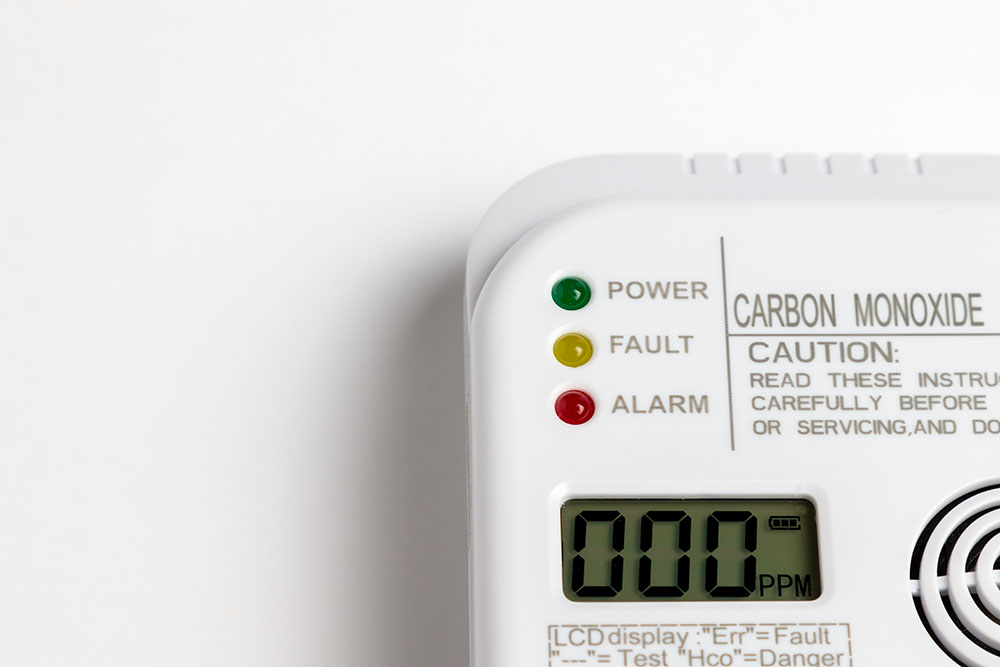Can Carbon Monoxide Cause A Fire?
 CONTENTS
CONTENTS
- What is carbon monoxide?
- What are the risks of carbon monoxide?
- How to prevent a carbon monoxide leak
- Can carbon monoxide leaks lead to a fire?
- What to do if a fire has damaged your home
- Get in touch
Carbon monoxide is known as the 'silent killer', claiming an estimated 30 lives a year and hospitalising 4,000. It does not just put your health at risk, it can also pose a fire risk and cause significant damage to your home.
Here at ICE Cleaning, we provide fire damage cleaning services that can remove soot, ash, and smoke odours from your property. Our expert technicians can respond to an emergency within a few hours.
Read on to learn more about carbon monoxide and its fire risk.
What is carbon monoxide?
Carbon monoxide is a type of gas produced when fuel such as wood, gas, oil, kerosene, and charcoal burns. If you don't have the appropriate ventilation or correct fuel, the carbon monoxide can get trapped in your home and build up overtime.
There are several sources of carbon monoxide you need to be aware of to help you avoid any health or fire hazards:
- A fireplace with an obstructed chimney
- Charcoal-burning grills indoors
- Gas stoves
- Generators or engines indoors
- Unsafe gas boilers
Because it is an invisible, odourless gas, it is undetectable without a carbon monoxide detector. Here are the signs of carbon monoxide present in your home:
- Yellow or orange flames on your gas hob
- Soot stains on or around gas appliances
- Pilot lights that go out frequently
- Increased condensation
- Rust or soot staining in a chimney
What are the risks of carbon monoxide?
Carbon monoxide is seriously harmful to your health, and can lead to death if not addressed quickly. You could mistake some symptoms for regular colds or flu-like ailments, but they will intensify over time:
- Headache
- Fatigue
- Dizziness
- Nausea
- Vomiting
- Shortness of breath
- Memory loss
When several people in your home – including your pets – start showing symptoms simultaneously, then it's time to call for help. At the first sign of symptoms, you should contact gas emergency services and seek medical attention immediately.
How to prevent a carbon monoxide leak
The best way to prevent any carbon monoxide poisoning in your home is to ensure all your gas appliances have been safety checked by a Gas Safe registered engineer. Then purchase and install a carbon monoxide detector.
A carbon monoxide detector requires minimal set-up and can be a standing device left in the same room as a gas appliance or boiler. Similar to a fire alarm, it will notify you at the first sign of a leak.
Adequate ventilation is also key to preventing carbon monoxide poisoning when there is a leak, and you can improve air circulation by:
- Leave trickle vents open and unblocked
- Leave doors between rooms open
- Clean extractor fans in bathroom and kitchen often
- Have your chimney cleaned at least twice a year
- Replace filters in mechanical ventilation often
By following these steps, you can prevent carbon monoxide poisoning and chimney fires.
Can carbon monoxide leaks lead to a fire?
Because carbon monoxide is a highly flammable gas, pure carbon monoxide stored in cylinders can be dangerous when mishandled. Fortunately, carbon monoxide forms in small quantities, so the risk of ignition is low if there is a leak.
If there has been a significant build-up of carbon monoxide, it may become a source of ignition. A house fire and combined leak in your home can lead to spontaneous combustion and – in rare cases – an explosion.
Over time, carbon monoxide accumulates into a sooty residue, and it will begin to block up your chimney if not maintained properly.
The damage left by house fires can be severe and will require fire-cleaning services. Additionally, you might require smoke odour removal due to the smell a fire can leave behind.
What to do if a fire has damaged your home
It is imperative that you find temporary housing and do not continue to live in a fire-damaged environment. Staying in a fire-damaged home will put you at risk of carbon monoxide poisoning and smoke inhalation.
You could also activate these particles by attempting to clean up the soot, thus putting your health in danger. You must dispose of your food, furniture, or clothing affected by the fire as it may increase your risk of illness.
Cleaners that provide fire damage cleaning and restoration services are more qualified to deal with the issue and can restore your property to the best of their ability.
Get in touch
ICE Cleaning's technicians have lots of experience with fire damage cleaning and fire smoke odour removal services. They are available 24/7, 365 days a year and will assist with waste collection and disposal.
Call us at 0208 066 0360 or email us at enquiries@icecleaning.co.uk for a free, no-obligation quote today.

Speak with me today,
I’m here to help
By asking you a few questions either via phone or email I can immediately provide a realistic estimation of the cost.
You’re in good company. We’ve cleaned for the following commercial clients… View all

Why choose us?
- Cater to a wide variety of cleaning situations
- Nationwide coverage, available 24/7
- Cater to commercial and domestic clients
- Free survey provided prior to quotation
- Emergency response team
- Offer a bespoke service designed to suit all your needs
- All technicians hold professional health and safety qualifications, including BICSc, IOSH, Dewpoint Professional & Safe Contractor
We’re fully accredited
We place best practise, professional expertise and health and safety at the core of our business. We’re fully compliant with all legal obligations. You can view a list of our accreditations below, or visit our Health & Safety page for more information.




-RGB-small.1707319151.jpg)



























